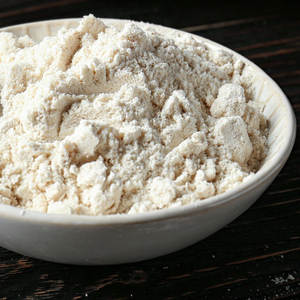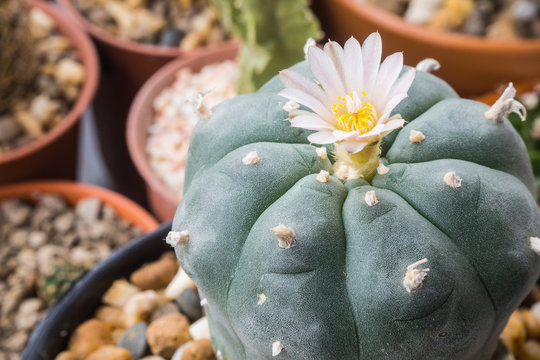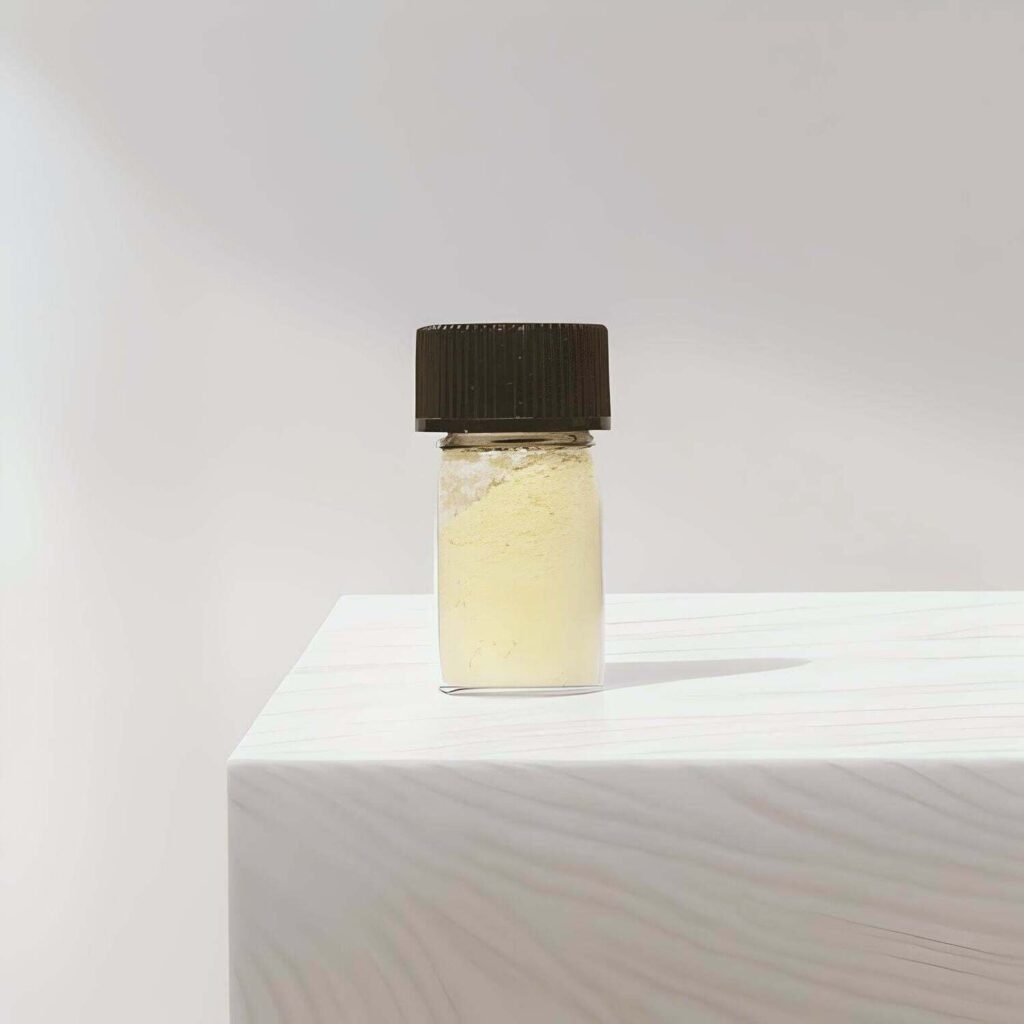
HEMPEARTH – Mescaline is a naturally occurring psychoactive alkaloid that is the main psychedelic compound in a range of psychedelic cacti native to the Americas, including peyote, San Pedro, and Peruvian Torch. In its natural state, mescaline has been used in Native American religious and shamanic ceremonies for thousands of years.
Mescaline was the first psychedelic to enter mainstream Western culture—before the widespread use of LSD and psilocybin. More recently, the extracted compound has shown promise in the medical and psychotherapeutic treatment of substance abuse and depression, among other conditions.
Pure mescaline is usually available as a white or brownish crystalline powder, either loose or packed into capsules as a pill. It can also be found as a liquid solution or brew.

Experience
Many factors contribute to the mescaline experience, including dose, mindset, setting, and method of consumption. With that in mind, each individual journey will be unique to the person, time, and place, and there’s no way to predict exactly what will happen. Mescaline does induce some common experiences and effects that can help you prepare for your journey.
What to expect
In whatever form it is consumed, a mescaline experience is highly hallucinogenic and lends itself to self-exploration. Many people report that it also creates a uniquely empathic effect in the user, making it useful for personal healing.
Mescaline effects are generally felt within 45-90 minutes of consumption, peaking at two to four hours and lasting for up to eight. During this time, you are likely to see closed-eye visuals of colors and patterns, such as mosaics, arabesques, and spirals. These visuals often transform into more definite objects like architecture, animals, and humans. At the same time, ordinary objects in your surroundings may appear more interesting, beautiful, and amazingly mystical—qualities that define the mescaline experience.
Your physical environment, as well as your own body, may distort in size and form. Some have reported the apparent loss of limbs, for instance, or the sense that hard objects like stones or walls have become soft and malleable to the touch. Other senses are also affected, sometimes to the point of synesthesia—sights may be “heard,” thoughts may be “smelled,” and sounds may be “tasted,” for example. Beautiful perfumes and music, or voices speaking strange languages, have also been reported.
For many, mescaline produces an experience of depersonalization or the dissolution of the ego; everything, including oneself, feels unified.
This experience can give rise to clear and connected thoughts, self-realization, empathy, and euphoria, each of which can feel profound and deeply meaningful.
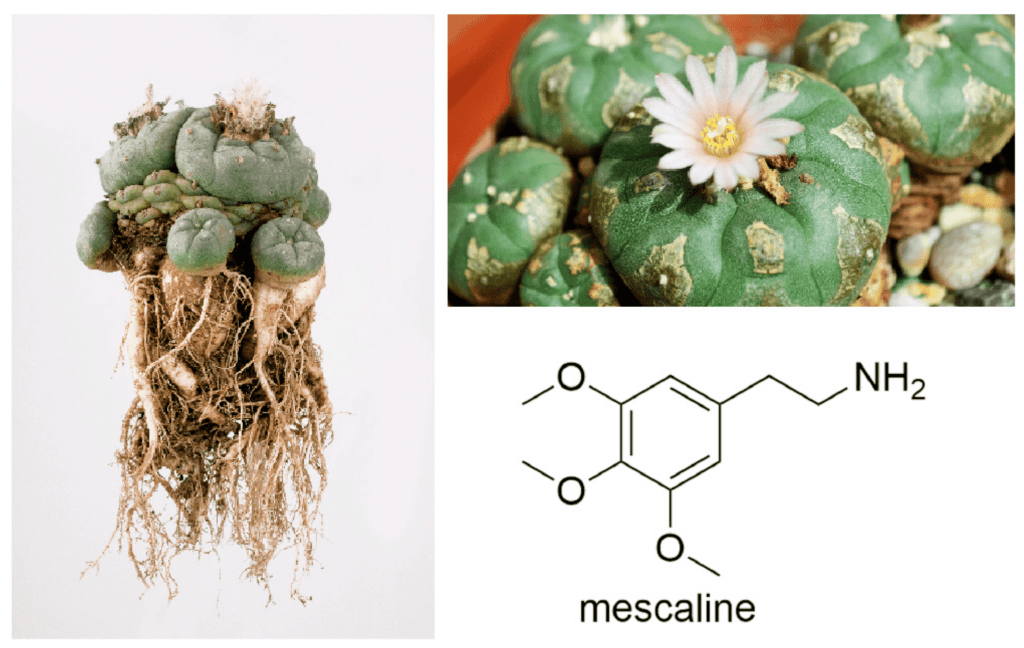
Effects
Pharmacology
Mescaline is a substituted phenethylamine, a molecule based on the basic phenethylamine structure. Along with MDMA, 2C-B, and others, this sets it apart from the tryptamine class of psychedelics, which includes psilocybin, LSD, and DMT.
Receptor binding
Mescaline binds to virtually all serotonin receptors in the brain but has a stronger affinity for the 1A and 2A/B/C receptors. Structurally, it is similar to LSD and is often used as a benchmark hallucinogen when comparing psychedelics.
Like nearly all hallucinogens, the psychedelic effects of mescaline are likely due to its action on serotonin 2A receptors.
Mescaline also tends to bind with dopamine receptors, either as a selective reuptake inhibitor or as a dopamine receptor agonist.
Dosage
Mescaline dosage varies—albeit only slightly—according to how the compound is extracted. For instance, 100 mg mescaline hydrochloride (HCl) is approximately equivalent to 111 mg mescaline sulfate or 85 mg mescaline freebase. These are threshold doses and are given as starting points for calculating your own dosage. A more common range for mescaline HCl is 200-300 mg. Anywhere between 300-500 mg is considered strong, while 500-700 mg is considered heavy.
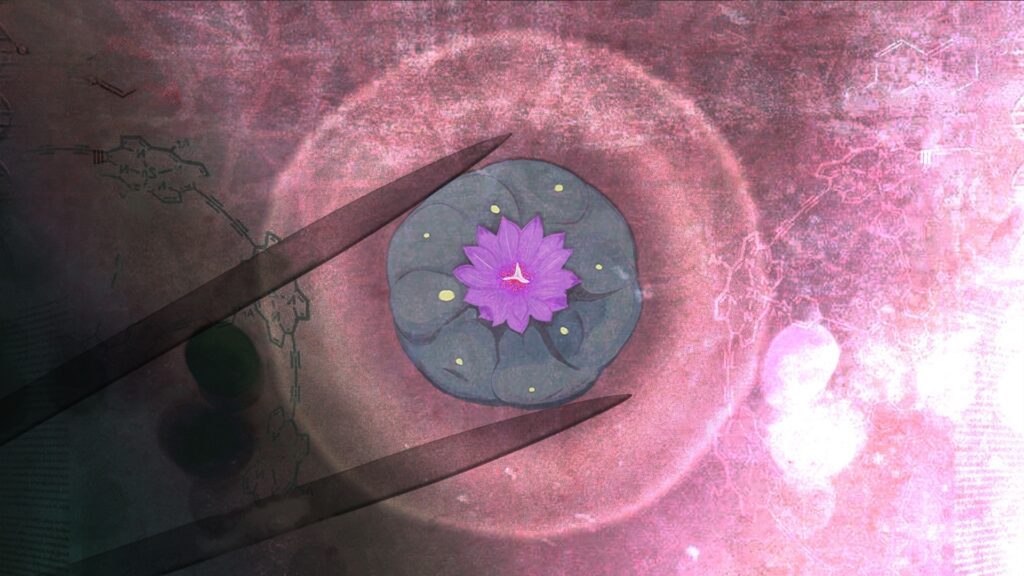
Benefits
Personal Growth
Most users find mescaline personally or spiritually transformative, and many emerge with a lasting appreciation for the interconnectedness of all life in the universe, and of their role within it. Others feel a deep sense of gratitude and unconditional compassion for everyone and everything around them. Early studies of mescaline also found that the experience left people with a greater sense of wellbeing, inner strength, and vitality.
In line with Native American ritual use of peyote, mescaline also help people solve sticky problems. In one study, a group of 27 men were given mescaline and asked to think about a problem they were facing at work, some of which had persisted for months. After just one dose, almost every participant either solved the problem for themselves or came up with new ways to approach it.
Peyote may also boost learning capabilities. In another study, researchers found that mescaline helped goldfish learn to avoid a shock more quickly. These findings support the prevailing view that mescaline and other psychedelics can enhance creativity. As the psychologist Stanley Krippner put it, “to invent something new, one cannot be completely conditioned or imprinted. Psychedelics like mescaline tend to dissolve preconceptions and elicit fresh perspectives on reality.
Therapeutic Use
Like with many other psychedelics, mescaline’s potential as a therapeutic substance was studied in the 1950s and 1960s—particularly in combination with LSD. Early results found that mescaline could be used to successfully treat addiction and depression.
Research into mescaline’s psychotherapeutic potential is still limited, but renewed interest in the drug shows that it could successfully treat mental health disorders. Studies suggest, for example, that mescaline may increase blood flow and activity in the prefrontal cortex, the area of the brain in charge of planning, problem-solving, emotional regulation, and behavior. Low activity in this area is linked to depression and anxiety, leading scientists to hypothesize that mescaline could help alleviate symptoms of these disorders.
Mescaline also activates serotonin and dopamine receptors, which could help boost mood and treat depression. In fact, one of the traditional therapeutic uses for peyote was as an antidepressant.
Some researchers have found that the antidepressant benefits of mescaline correlate to a subjects’ willingness to engage with the experience, to face themselves and to act upon the insights received. In one mid-century study, some of the most significant transformations or breakthroughs came about months after the experience itself, even if the initial psychedelic therapy session seemed to be a failure. In the context of psychotherapy, mescaline may also be useful for re-living or recalling repressed memories.
Addiction is another promising application for mescaline’s therapeutic potential. As peyote, mescaline has long been used in traditional ceremonial contexts to treat alcoholism.
In traditional settings, mescaline has been used for alleviating symptoms of fever, headache, sunstroke, and arthritis. Actually the cactus is traditionally seen as something of a cure-all and is sometimes taken daily. According to some Native Americans, the proper use of peyote renders all other medicines superfluous. While there are key differences between modern Western medicine and the medico-religious approach of Native American mystics, clinical studies have supported mescaline’s role in pain relief, and in promoting the release of growth hormones.
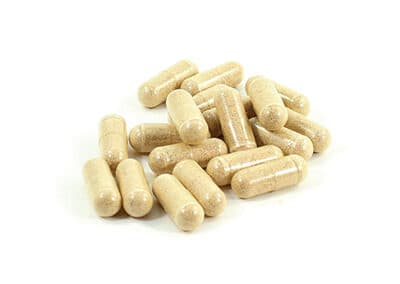
Microdosing Mescaline
Microdosing is the act of consuming sub-perceptual (unnoticeable) amounts of a psychedelic substance. Many individuals who have integrated microdosing mescaline into their weekly routine report higher levels of creativity, more energy, increased focus, and improved relational skills, as well as reduced anxiety, stress, and even depression. Some enthusiasts also report that microdosing mescaline has helped them heighten their spiritual awareness and enhance their senses.
While psilocybin and LSD are more commonly used for microdosing, mescaline is a good alternative. In fact, many users find mescaline more consistently reliable than LSD and psilocybin—and many also report greater results in personal growth and benefit. Mescaline also has a much longer history of use—and this goes for microdosing too. The (Rarámuri) Indians, for example, have used small amounts of peyote while hunting, allowing them to stalk deer for days on end without rest.
In modern times, self-experimenters around the world are reporting a much wider range of benefits, including personal insights, mood enhancement, increased empathy and creativity, lifestyle changes, and even lucid dreams.
Some people have also found mescaline microdosing useful for treating the symptoms or even the underlying causes of depression, including experiencing a sense of peace and calm without the “numbness” of conventional antidepressant medications.
Beyond cognitive effects, imperceptible doses of mescaline have also been shown to act as anti-inflammatory agents. In fact, this is one of the ancient medicinal uses of this compound. A 2008 study concluded that mescaline had “extraordinarily potent” anti-inflammatory effects, and a 2018 study found that psychedelics in general help regulate inflammatory pathways, which could prove therapeutic for a number of diseases, including asthma, atherosclerosis, inflammatory bowel disease, and retinal disease.
Mescaline is available in a variety of forms, including raw/dried cactus preparations and extracted mescaline salts. As a general rule for microdosing, 1-2 mg of mescaline is approximately equivalent to 1 µg (microgram) of LSD. An effective microdose, then, falls somewhere between 10-40 mg for most people, although some people have reported using upwards of 50 mg in some preparations.
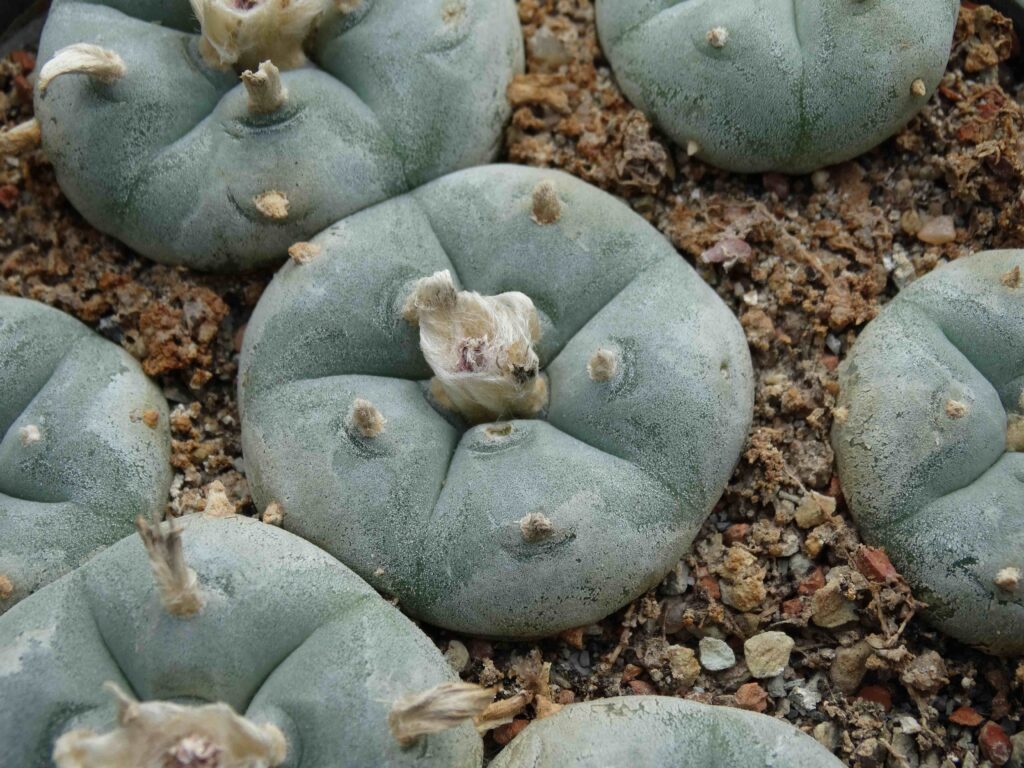
Macrodosing Mescaline
Macrodoses have been used in Native American religious and shamanic ceremonies for thousands of years. Taken in the form of peyote, San Pedro, or Peruvian torch, these ceremonies or “journeys” were undertaken with the explicit purpose of personal and spiritual healing.
For many, a mescaline journey offers deep insight into the self and the universe. Unlike a microdose, a full dose of mescaline can produce an experience of depersonalization or the dissolution of the ego; everything, including oneself, feels unified. This experience can give rise to clear and connected thoughts, self-realization, empathy, and euphoria, each of which can feel profound and deeply meaningful.
What does mescaline look like?
In the wild, mescaline is contained in certain cacti. The Peyote cactus is a small, bulbous cactus that does not have spines. It grows in clusters that are often referred to as “buttons.” The San Pedro and Peruvian Torch are columnar cacti. Their ribs are thin, yet grow tall and are often found in bunches. Other than the naturally occurring state of these cacti, you can also find mescaline in a crystalline powder form after a cactus has gone through a mescaline extraction process. The powder can range in color from white to brown based on variables in the mescaline extraction method and the presence of other naturally occurring alkaloids.
How do I take it?
The most popular way to take mescaline is to weigh out your dose and pack it into capsules, then swallow on an empty stomach. You could also dissolve the powder in bitter fruit juice, such as grapefruit, to mask the taste.
